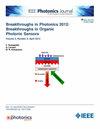KEDM: Knowledge-Embedded Diffusion Model for Infrared Image Destriping
IF 2.4
4区 工程技术
Q3 ENGINEERING, ELECTRICAL & ELECTRONIC
引用次数: 0
Abstract
Infrared imaging systems are widely used across industries. However, their output images often exhibit striped noise due to the nonuniform response of the detection system, which significantly affects image quality and visual fidelity. To address challenges such as incomplete stripe removal, potential loss of image details and textures, and the generation of artificial artifacts during destriping, we propose a novel stripe removal method based on a knowledge-embedded diffusion model (KEDM). This approach effectively integrates the spatial distribution characteristics of stripe noise with an innovative, data-driven diffusion network model, creating a hybrid knowledge and data-driven framework for stripe correction. The core components of KEDM are the latent diffusion model (LDM) architecture and the directional wavelet convolution module (DWCM). Specifically, LDM leverages a pretrained variational autoencoder (VAE) to transform the input image into latent feature space for efficient diffusion propagation, reducing computational complexity while preserving image restoration quality. Meanwhile, DWCM uses wavelet convolution operations to construct prior loss functions for stripe noise, precisely guiding the diffusion reconstruction process to achieve a clean, stripe-free image. Empirical evaluations on several benchmark datasets demonstrate that the proposed KEDM outperforms other state-of-the-art destriping algorithms in terms of visual quality and quantitative metrics, validating its excellent performance.红外图像去条纹的知识嵌入扩散模型
红外成像系统广泛应用于各个行业。然而,由于检测系统的非均匀响应,它们的输出图像经常呈现条纹噪声,这严重影响了图像质量和视觉保真度。为了解决条纹去除不完全、图像细节和纹理的潜在损失以及去除条纹过程中产生的人工伪影等挑战,我们提出了一种基于知识嵌入扩散模型(KEDM)的条纹去除方法。该方法有效地将条纹噪声的空间分布特征与创新的数据驱动扩散网络模型相结合,创建了一种知识和数据驱动的条纹校正混合框架。KEDM的核心组件是潜在扩散模型(LDM)架构和定向小波卷积模块(DWCM)。具体来说,LDM利用预训练的变分自编码器(VAE)将输入图像转换为潜在特征空间,以进行有效的扩散传播,在保持图像恢复质量的同时降低计算复杂度。同时,DWCM利用小波卷积运算构造条纹噪声的先验损失函数,精确指导扩散重建过程,获得干净、无条纹的图像。对几个基准数据集的实证评估表明,所提出的KEDM在视觉质量和定量指标方面优于其他最先进的去条带算法,验证了其出色的性能。
本文章由计算机程序翻译,如有差异,请以英文原文为准。
求助全文
约1分钟内获得全文
求助全文
来源期刊

IEEE Photonics Journal
ENGINEERING, ELECTRICAL & ELECTRONIC-OPTICS
CiteScore
4.50
自引率
8.30%
发文量
489
审稿时长
1.4 months
期刊介绍:
Breakthroughs in the generation of light and in its control and utilization have given rise to the field of Photonics, a rapidly expanding area of science and technology with major technological and economic impact. Photonics integrates quantum electronics and optics to accelerate progress in the generation of novel photon sources and in their utilization in emerging applications at the micro and nano scales spanning from the far-infrared/THz to the x-ray region of the electromagnetic spectrum. IEEE Photonics Journal is an online-only journal dedicated to the rapid disclosure of top-quality peer-reviewed research at the forefront of all areas of photonics. Contributions addressing issues ranging from fundamental understanding to emerging technologies and applications are within the scope of the Journal. The Journal includes topics in: Photon sources from far infrared to X-rays, Photonics materials and engineered photonic structures, Integrated optics and optoelectronic, Ultrafast, attosecond, high field and short wavelength photonics, Biophotonics, including DNA photonics, Nanophotonics, Magnetophotonics, Fundamentals of light propagation and interaction; nonlinear effects, Optical data storage, Fiber optics and optical communications devices, systems, and technologies, Micro Opto Electro Mechanical Systems (MOEMS), Microwave photonics, Optical Sensors.
 求助内容:
求助内容: 应助结果提醒方式:
应助结果提醒方式:


